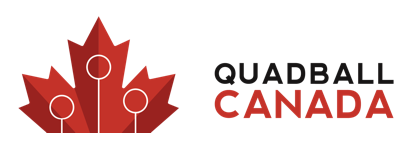
13
MARCH, 2017
Blog

Controlling the game: A referee’s guide
Ittaana Krow
Gameplay Coordinator
The game is close; every play increases in intensity; you can feel the tension rising. These teams have faced each other before, but there is no clear favourite. This is a grudge match. Now, factor in the personal aggression of the players; each tackle seems more forceful than the next. The bench gets more and more animated as their team desperately tries to gain an edge.
Then a huge hit occurs.
Both teams immediately react: one cheers, the other screams foul as their coach demands a penalty. You’re the referee – it’s your responsibility to maintain control over the game, but once your teams have reached the point where they believe they must take matters into their own hands, it’s too late. The rules are forgotten, a fight breaks out, and you’ve lost control over the game in its entirety.
Competitive sports – and team sports, in particular – lay the groundwork for emotional outbursts, aggressive behaviour, and the occasional fight, and quidditch is no exception to this trend. When it comes to the Canadian quidditch community, my experience as a player and as a referee has shown that these incidents are becoming more frequent, particularly as it’s often the same teams – refereed by former teammates and competitive adversaries – facing each other time and time again. So not only are we dealing with a full contact sport where one might reasonably expect emotions to run high, but we’re also dealing with the potential for these outbursts to feel personal to the individuals involved.
This is why controlling the game is so important, and as as referee, it’s a skill that doesn’t get a lot of shine. An effectively controlled game regulates the emotions of both teams, prevents situations from being unnecessarily escalated, and maintains the overall safety of the players and referees involved. So, how does one control a game?
1. Set the tone. At the ref meeting prior to the start of the game, outline how you’d like teams to communicate with you, and the importance of player conduct. Be explicit about ensuring that only speaking captains should be communicating with you. Keep in mind that it is always within your power to limit the amount of on-field discussion you share with the players, especially when play is being held up.
2. Be attentive. During the game itself, you need to pay attention to not only the surface game interactions, but also to the game within the game. Trash talk is a straightforward example of this – directed insults from one player to another on the field, or insults directed at the opposing bench may seem harmless, but they contribute to an atmosphere that can potentially lead to an escalated situation. Give warnings for such incidents as soon as you see them. Pay attention to the physicality of the game. If you see unnecessary roughness, know that there is a strong likelihood that teams will look to retaliate to defend their teammate. Leaving offhand comments, directed insults, and unnecessary aggression unattended could spark incidents in the later stages of the game, and could make your job as a referee more challenging than it needs to be.
3. Now, this part is important: Don’t be afraid to give cards. Not giving a card when one should’ve been given shows both teams that you’re willing to tolerate the contact and tempts them to push the boundaries to find out where your limits are. Remember, it’s not the teams, the captains, or the players that dictate the flow of the game – this is your responsibility. Sending a message early with a card will increase the level of player safety by setting boundaries for the play.
4. Make calls with confidence. Not only is it important to give cards as they’re warranted, but to do so confidently. I’ll give you an example: I play in basketball rec league, and at a recent game of mine, a player on the opposing team approached a newer ref and asked for clarification on a violation. The ref began to overly elaborate on the reasoning behind the call, when the Head Referee yelled out from across the court: “This is not up for debate! A call is a call. They can talk about it after the game.” This is not to say that explanations regarding calls aren’t warranted, but keep these explanations straightforward and to the point. If your teams do have concerns about a particular call, address them efficiently and only through team’s speaking captain, so you’re not slowing the pace of the game and further frustrating your players and the crowd.
This brings me to a final point on confidence. Remember that even professional referees miss calls and make mistakes, and you are bound to as well. It’s how you handle those mistakes that make or break a referee. Once a call has been made, there is no backtracking unless your colleagues overwhelmingly vote to overrule. Otherwise, stay firm with your original judgement, and don’t allow reactions from the players or the crowd have any effect on your psyche. You’re the referee, after all.
This article has been adapted into a Quidditch Canada Guide. Our Quidditch Canada Guides are intended to be used as resources for athletes, coaches, referees, and volunteers. To read the official QC Guide version of this article, click here.
